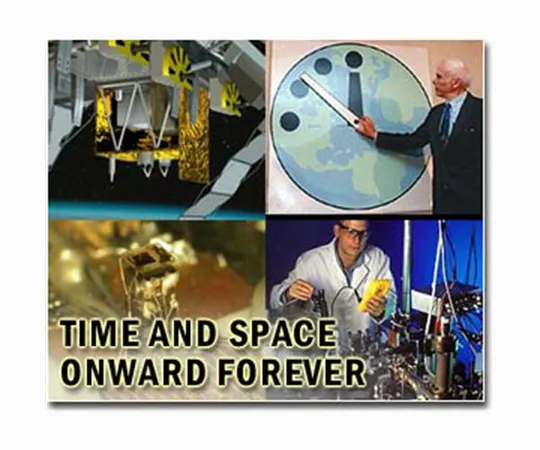
Revolutionary Atomic Clock Set to Transform Timekeeping on the ISS
2025-04-23
Author: Siti
Groundbreaking Mission Launches Precision Timepiece to Space
The Atomic Clock Ensemble in Space (ACES), a groundbreaking initiative by the European Space Agency (ESA), has commenced its journey to the International Space Station (ISS), poised to redefine timekeeping from orbit. This mission features two ultra-precise atomic clocks and a cutting-edge time-transfer system, enabling it to broadcast the most accurate time signals ever generated in space and conduct crucial experiments that test the foundations of Einstein's theory of general relativity.
A Historic Launch from NASA's Kennedy Space Center
Launched aboard SpaceX's Falcon 9 rocket as part of NASA's 32nd commercial resupply mission to the ISS, ACES embodies Europe's dedication to advancing high-precision science and collaborative exploration. "This campaign is a monumental achievement for European science and international partnerships in space exploration," remarked Daniel Neuenschwander, Director of Human and Robotic Exploration at ESA.
Unparalleled Precision: Timekeeping in Space
At the heart of the ACES mission is the PHARAO clock, developed by CNES, combined with the Space Hydrogen Maser (SHM) from Safran Timing Technologies. Together, these sophisticated instruments can maintain a time reference that deviates by just one second over an astonishing span of 300 million years. The integration of an advanced time transfer system from TimeTech in Germany further elevates precision, utilizing both microwave and optical links to synchronize times between orbit and Earth like never before.
Strategic Operations and Future Impacts
Mission operations will be overseen by CADMOS in France alongside the Columbus Control Centre in Germany. Once on the ISS, ACES will be installed in the Columbus module's Earth-facing position by the station's robotic arm. Over its anticipated 30-month deployment, ACES is expected to carry out at least ten dedicated measurement campaigns, each lasting 25 days, dramatically pushing the boundaries of space-based metrology and enhancing our understanding of time and gravity.
Unlocking New Frontiers in Physics
This mission not only represents a significant technological achievement but also opens up new avenues in scientific research, allowing for groundbreaking studies on the very fabric of space and time. With ACES on board, the ISS is set to become a vital hub for advancements in fundamental physics and global time synchronization, paving the way for a future where precision in timekeeping is paramount.

 Brasil (PT)
Brasil (PT)
 Canada (EN)
Canada (EN)
 Chile (ES)
Chile (ES)
 Česko (CS)
Česko (CS)
 대한민국 (KO)
대한민국 (KO)
 España (ES)
España (ES)
 France (FR)
France (FR)
 Hong Kong (EN)
Hong Kong (EN)
 Italia (IT)
Italia (IT)
 日本 (JA)
日本 (JA)
 Magyarország (HU)
Magyarország (HU)
 Norge (NO)
Norge (NO)
 Polska (PL)
Polska (PL)
 Schweiz (DE)
Schweiz (DE)
 Singapore (EN)
Singapore (EN)
 Sverige (SV)
Sverige (SV)
 Suomi (FI)
Suomi (FI)
 Türkiye (TR)
Türkiye (TR)
 الإمارات العربية المتحدة (AR)
الإمارات العربية المتحدة (AR)